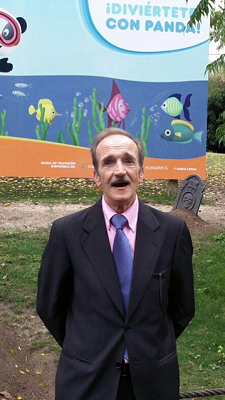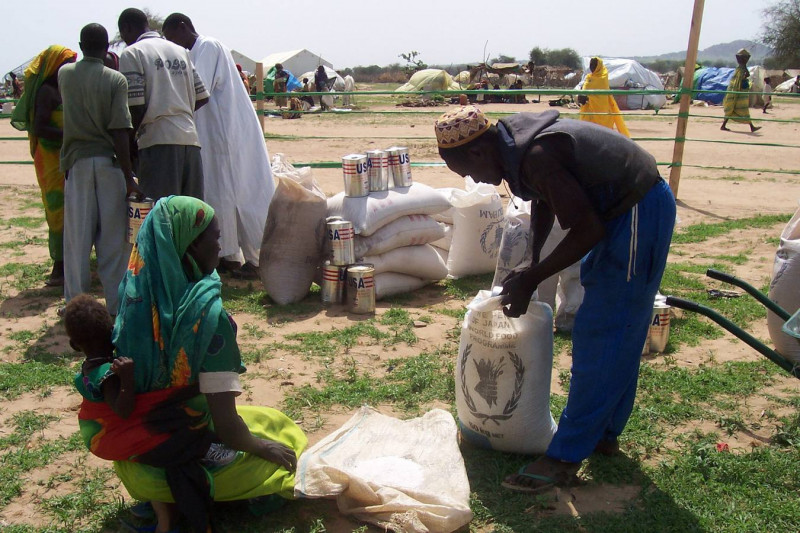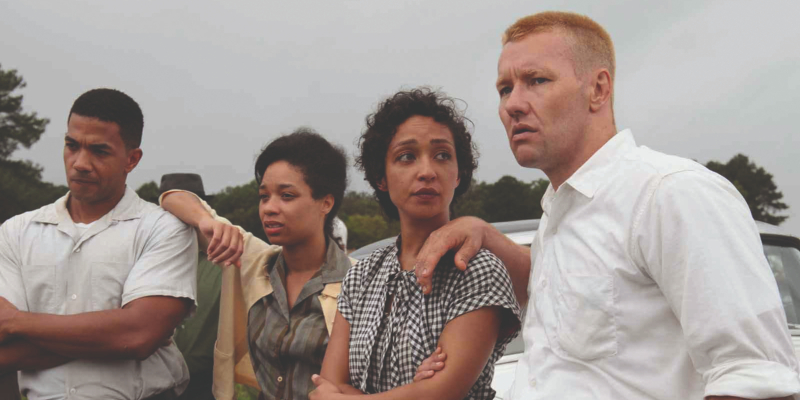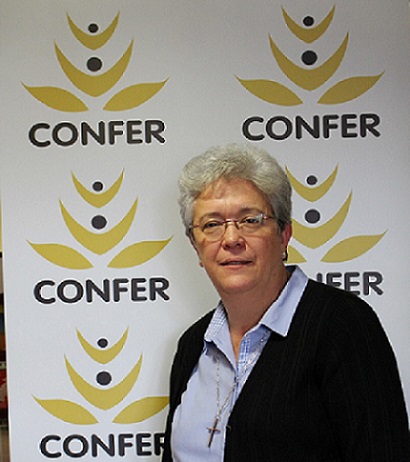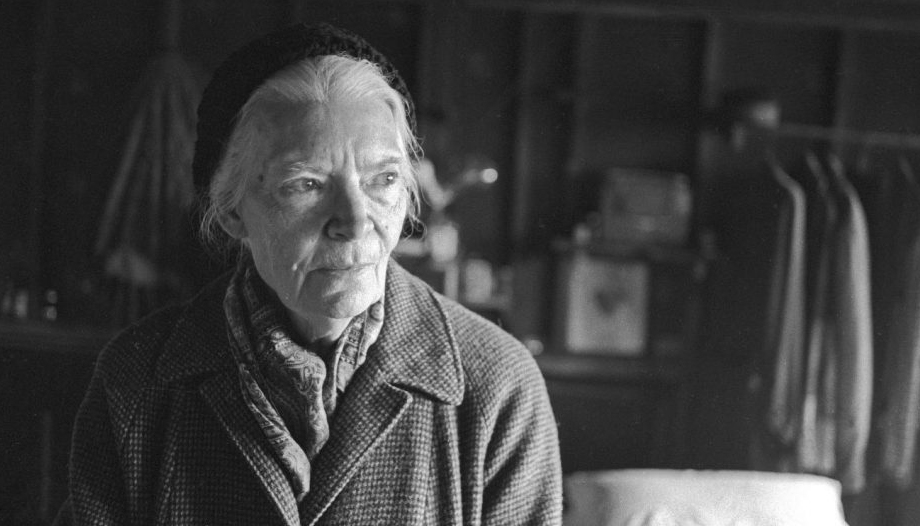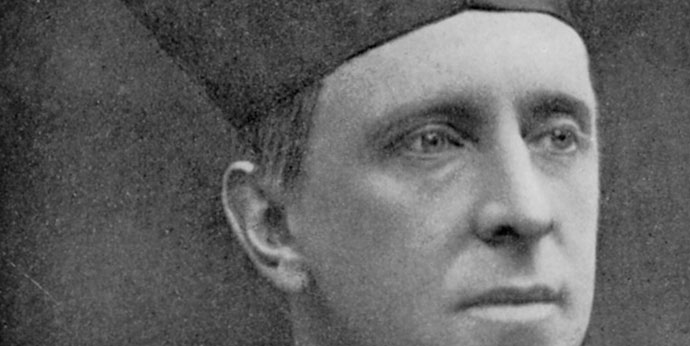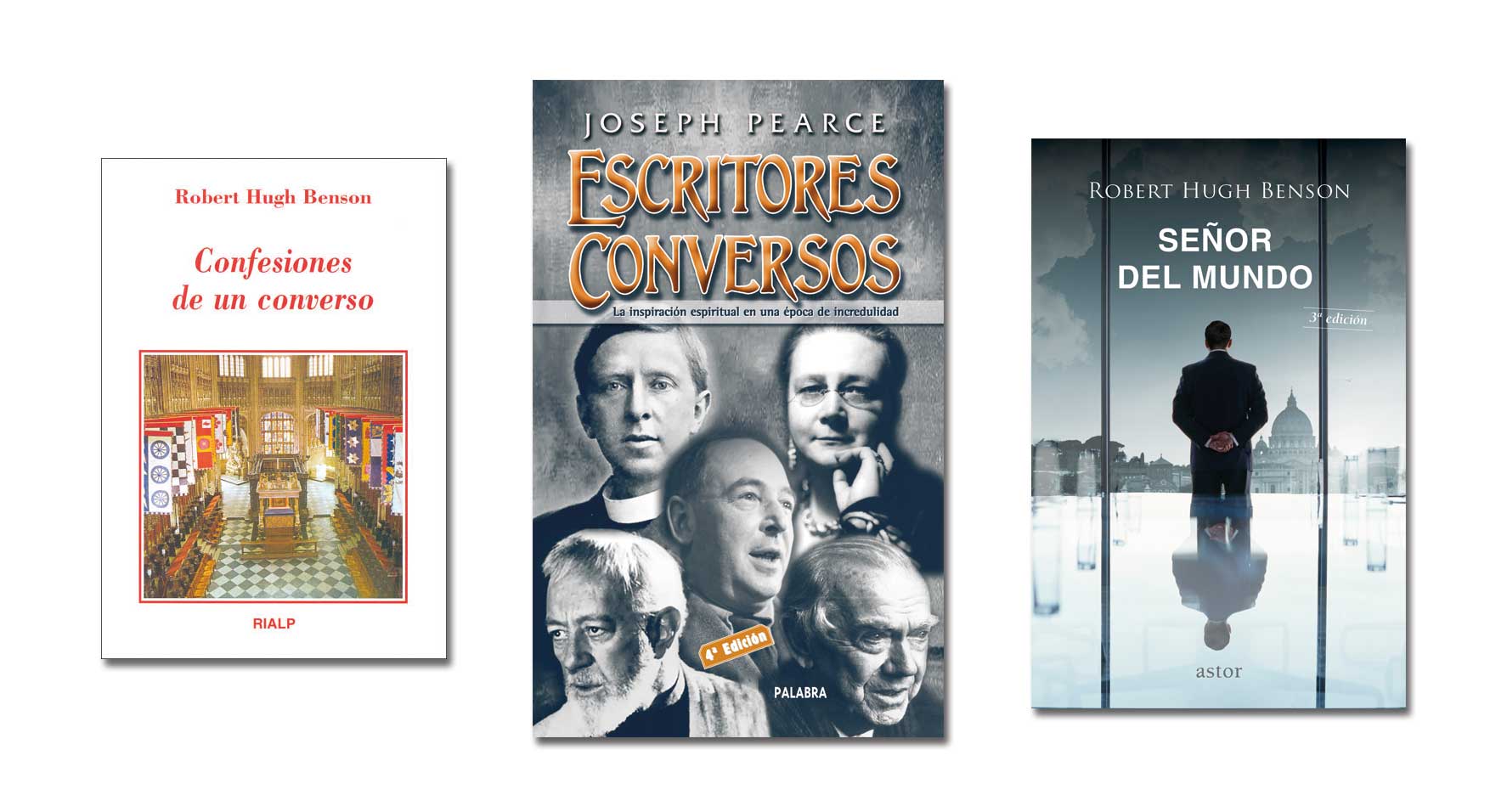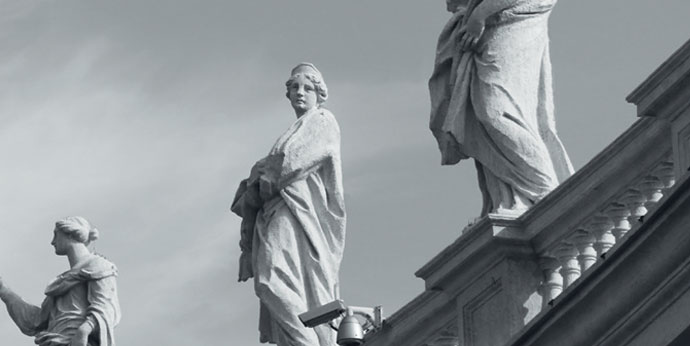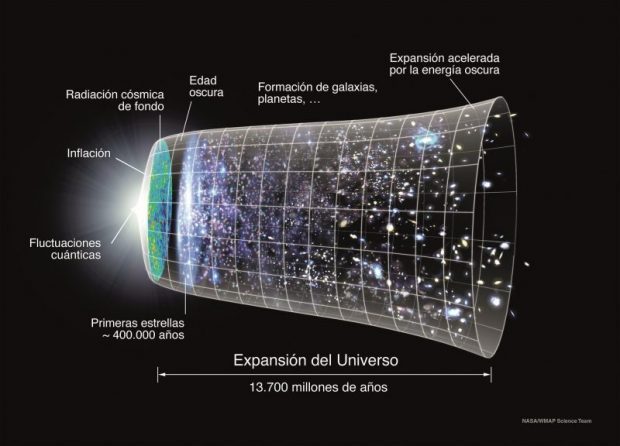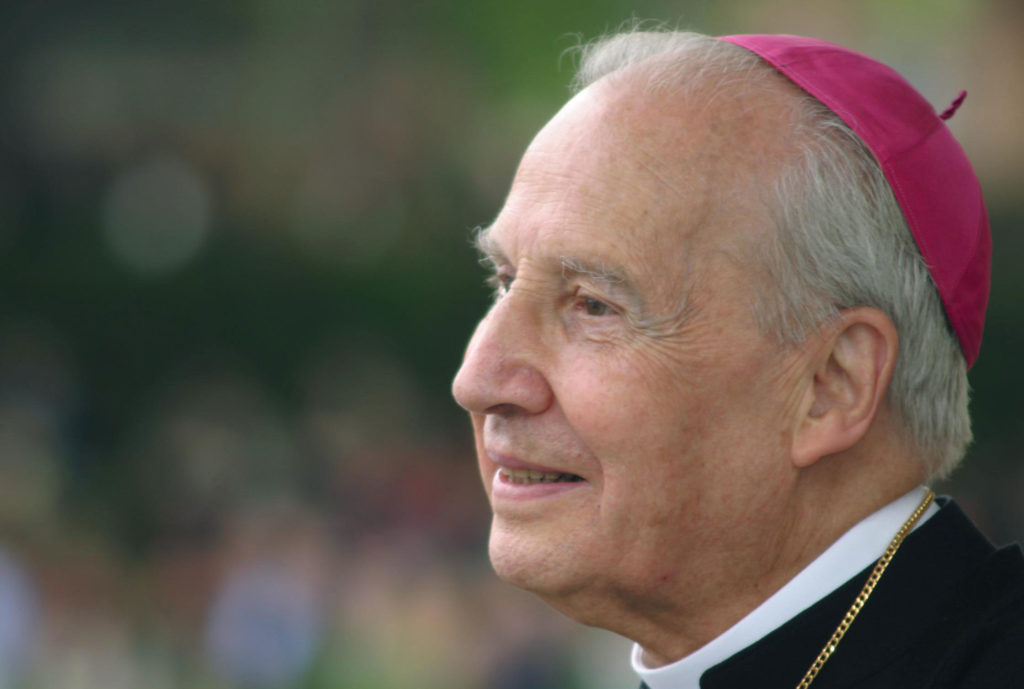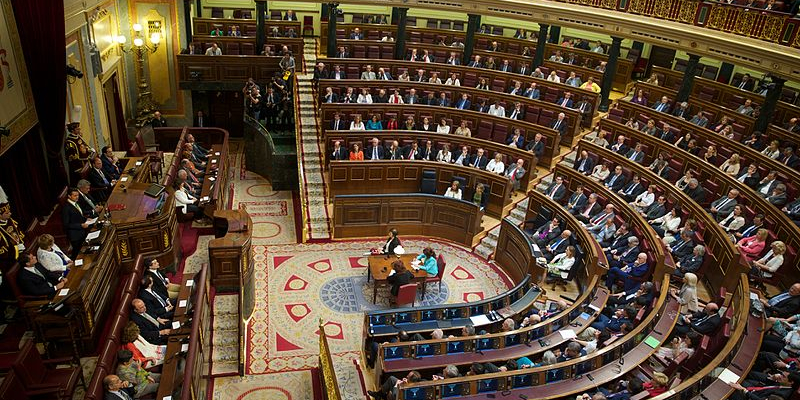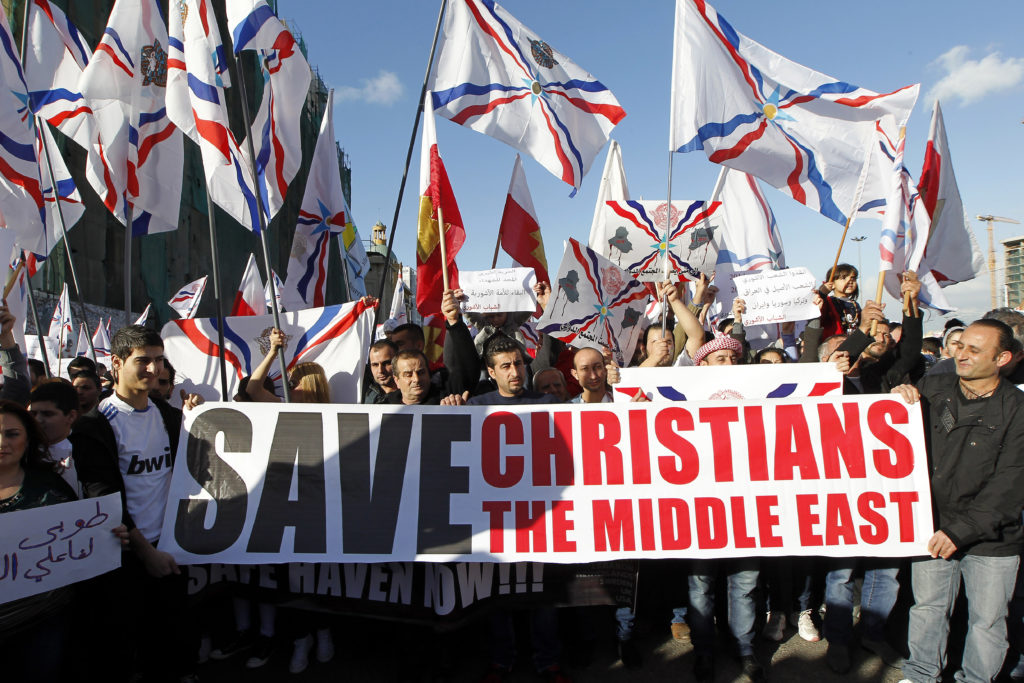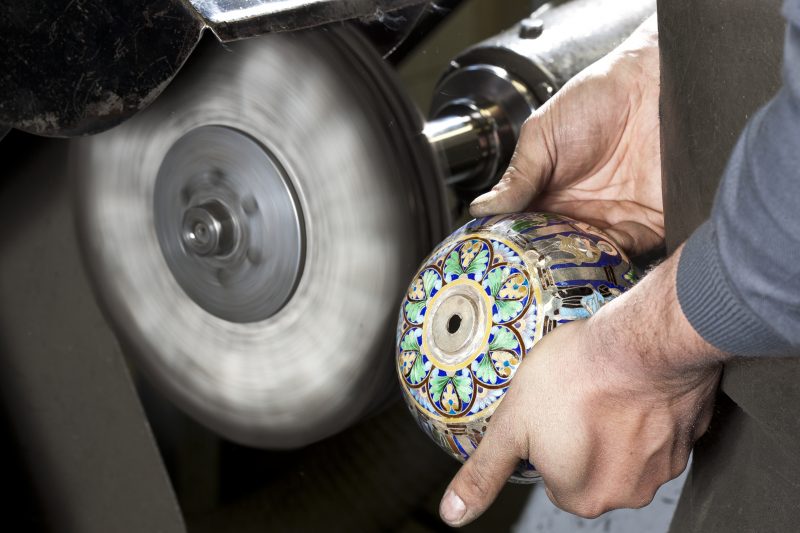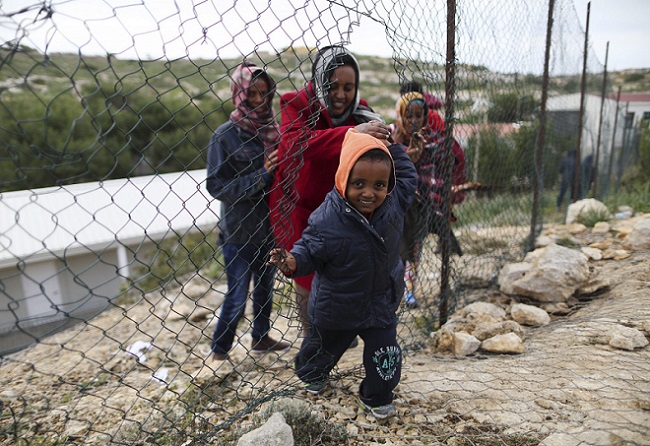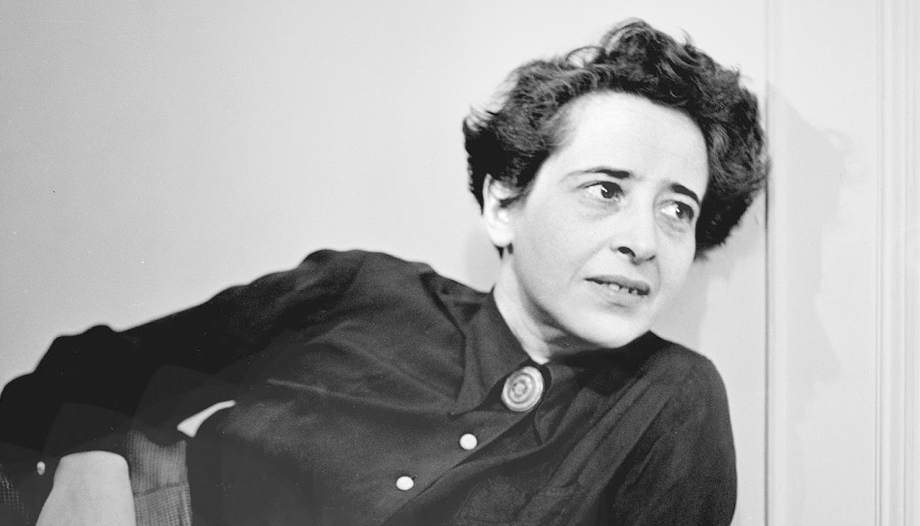The agreed objective was to dedicate a good part of the interview to bring the reader closer to the person of Bishop Fernando Ocáriz. The new Prelate of the Opus Dei He has fulfilled it faithfully, overcoming his notable reluctance to focus the conversation on himself. Reserve is part of his character, as is expressive sobriety, although he is not lacking in cordiality or openness. As far as the photo session is concerned, it was an unpleasant duty for him, but one that he took on with good humor.
The meeting took place at the headquarters of the Curia of the Prelature of Opus Dei, the building where St. Josemaría Escrivá, Blessed Álvaro del Portillo and Javier Echevarría lived and worked. Although Fernando Ocáriz came to the forefront of the Work's government in 1994, when he was appointed vicar general (since 2014 he was auxiliary vicar), he has lived here for 50 years, knows every detail of Opus Dei's activity and acts in full identification with his predecessors.
We thank the Prelate for this interview, the first of this breadth, just two weeks after his election and appointment on January 23, 2017.
FIRST YEARS
-You were born in Paris in 1944 to a Spanish family. Why were you born in France?
The civil war. My father was a soldier on the Republican side. He never wanted to tell details; but I understand that, because of his position as a commander, he had the opportunity to save people, and within the Republican army itself he ended up in a risky situation. As he was not a supporter of Franco, he thought it was convenient to go to France, and he took advantage of the proximity of the border of part of the army, and went there, through Catalonia. He was a military veterinarian, but he had devoted himself mainly to research in animal biology. He was not what could be considered a politician, but a military man and a scientist.
-Do you have any memories of that time?
What I know of that time is from hearing about it. When the family left for France I was not yet born, and neither was my seventh sister, the one before me (I did not get to know my two older sisters, who died at a very young age, long before I was born). The two youngest of us were born in Paris. I was born in October, just one month after the liberation by American and French troops under General Leclerc.
-Was politics discussed at home?
I have no memory of Paris. Already in Spain, little was said; rather loose and brief comments were made, not favorable, although not violent, to the Franco regime. In any case, it must be recognized that, from that time on, my father and the family led a peaceful life: my father was later readmitted to an official research center, under the Ministry of Agriculture, in Madrid, where he worked until his retirement.
-What about religion? Did you receive your faith in the family?
I received my faith mainly from my family, especially from my mother and my maternal grandmother, who lived with us. My father was a very good person, but at that time he was quite distant from religion. He would eventually return to religious practice, and became a supernumerary of Opus Dei. In the family home I learned the basics of the life of piety.
-From Paris, they returned to Spain.
I was three years old at the time, and I have only a vague memory, like an image engraved in my memory, of the train trip from Paris to Madrid.
-Where did you go to school?
In Areneros, the Jesuit school. I was there until the end of high school. It was a good school with quite serious discipline. Unlike what I have heard about other schools of the time, I never saw a Jesuit hit anyone in the eight years I was there. I am grateful for that. I remember quite a few teachers, especially those of the last years; for example, in the last year we had as mathematics teacher a layman and father of a family, surnamed Castillo Olivares, a truly valuable person, whom we admired very much.
MEETING WITH OPUS DEI
-You studied physics in Barcelona. What was the reason for your transfer?
Actually, I did my first year of university in Madrid. It was the "selective", which introduced all the engineering and science faculties. There were only five subjects, common to all these careers: mathematics, physics, chemistry, biology and geology. We were a very large class; several groups, each with more than a hundred students.
That first year I had Francisco Botella as my mathematics teacher. [professor, priest and one of the first members of Opus Dei].. When he later found out that I was from the Work and that I was thinking of studying physics, he told me: "Why are you doing physics? Why don't you do mathematics? If you want to earn money, become an engineer, but if you are interested in science, why don't you study mathematics?
When I went to Barcelona I was already a member of Opus Dei. I lived in the Monterols Hall of Residence, where I combined my physics studies with the theological and spiritual formation that people who join the Work receive.
-When did you get to know Opus Dei?
From conversations between my older siblings and my parents, I had heard the expression "Opus Dei" when I was very young. Although I had no idea what it was, the word was familiar to me.
When I was in the fifth year of high school, I went to a center of the Work that was on Padilla Street number 1, on the corner of Serrano, and that is why it was called "Serrano"; it no longer exists. I went a few times. I liked the atmosphere and what was said, but at school we already had spiritual activities and maybe I didn't see the need. I also went some times to play soccer with the "Serrano" people.
Later, in the summer of 1961, after high school and before university, my older brother, who worked as a naval engineer in one of the shipyards in Cadiz, invited me to spend a few weeks there with his family. Very close to his house there was an Opus Dei center, and I started going there. The director was a sailor and naval weapons engineer who encouraged me to make the most of the time: he even gave me a chemistry book to study, something I had never done in the summer! There I prayed, studied, chatted and, between one thing and another, I assimilated the spirit of Opus Dei.
He ended up talking to me about the possibility of having a vocation to the Work. I reacted as many do, saying: "No. In any case, like my brother, who is a father of a family". I dragged my feet on the subject until I made up my mind. I remember the precise moment: I was listening to a Beethoven symphony. Naturally, it is not that I made up my mind because of the symphony, but that I happened to be listening to it when I made up my mind, after having thought and prayed a lot. A few days later I returned to Madrid.
-So, do you like music?
Yes.
-Who is your favorite musician?
Maybe Beethoven. Also others: Vivaldi, Mozart..., but if I had to choose one, I would choose Beethoven. The truth is that I have been listening to very little music for years. I don't follow a precise plan.
-Would you mind describing that decision to surrender to God?
There was no precise moment of "encounter" with God. It has been a natural, gradual thing, since I was a child and I was taught to pray. In a progressive way, I got closer to God at school, where we had the opportunity to receive communion daily, and I think that helped me to make the decision to join the Work relatively quickly. I applied for admission to the Work when I was a month shy of my 17th birthday, so I joined when I was 18.
-What can you tell us about the Barcelona years?
I was in Barcelona for five years, two as a resident in that study center and three as part of the direction of the Colegio Mayor. There I studied the other four years of my degree, and then I continued one more year teaching at the Faculty as an assistant. All the memories of Barcelona are wonderful: of friendship, study... A special memory is the visits we made to the poor and the sick, as is the tradition of the Work. Many of us university students who went there realized that contact with poverty, with pain, helps to relativize one's own problems.
-When did you meet St. Josemaría Escrivá and what impression did he make on you?
August 23, 1963. It was in Pamplona, in the Colegio Mayor Belagua, during a summer training activity. We had a very long discussion with him, at least an hour and a half. He made a wonderful impression on me. I remember that, afterwards, several of us commented that we should see Father -that is what we called the Founder- much more frequently.
His sympathy and his naturalness were striking: he was not a solemn person, but a natural person, with good humor, who often told anecdotes; and at the same time he said very profound things. It was an admirable synthesis: to say profound things with simplicity.
I saw him again soon after, I think the following month. I went to spend a few days in Madrid, and it coincided that Father was in Molinoviejo, so we went to see him from several places.
On none of those occasions did I get to speak with him personally. Later, here in Rome I did, of course: many times.
FIFTY YEARS IN ROME
-He moved to Rome in 1967...
I came for theological studies, and I also got a scholarship from the Italian government for research in Physics during the 1967-1968 academic year, at the University La Sapienza. In reality, I was able to do little in the way of research, only what was required by the scholarship. When I came here, I did not expressly have the prospect of pursuing an academic career in theology. Things just rolled on by themselves. I had no plans in that direction.
-His ordination to the priesthood was in 1971.
Yes, I was ordained on August 15, 1971, in the Basilica of St. Michael in Madrid. The ordaining bishop was Don Marcelo González Martín, still bishop of Barcelona, shortly before moving to Toledo.
They jokingly said that there were four of us Frenchmen in the class: two were "complete" Frenchmen, Franck Touzet and Jean-Paul Savignac; then there was Agustin Romero, a Spaniard who had been in France for many years; and finally me, who had been born in Paris and had lived there for three years.
I can't say that I always felt the call to the priesthood. When I came to Rome I expressed a disposition in principle, and then I said openly to St. Josemaría: "Father, I am ready to be ordained. He took me by the arm and said to me, among other things, more or less: "You give me great joy, my son, but when the time comes you have to do it in complete freedom. That conversation was in the Galleria della CampanaI think at the end of one of the get-togethers that we had with him very often at that time.
-Did you receive any pastoral assignment in Spain after ordination?
No. Three days after my ordination, I said my first solemn Mass in the Basilica of St. Michael and immediately returned to Rome. Here I had previously collaborated in youth apostolate activities at Orsini, which was then a center for university students, giving Christian formation classes and participating in other activities.
When I was already a priest in Rome, I worked for several years in the parish of Tiburtino (San Giovanni Battista in Collatino), and then in the Sant'EugenioI served as a priest in several centers of the Work, both for women and men; and I worked here in the offices of the central headquarters. In short, a normal trajectory.
-It is known that you like tennis. When did you become a tennis fan?
I started playing tennis relatively early, in Barcelona. I was taught a lot by an Italian, Giorgio Carimati, now a priest and already an old man, who played tennis very well at that time; in Italy he had been almost a professional. But there have been comings and goings with tennis, because I injured my right elbow and some times I devoted myself to cycling. Now I try to practice; I try to play every week. But it's not always possible, because of the weather, my work schedule, etc.
-Do you play games... "for real", to win?
Yes, of course. As for winning, it depends on who you play.
-Do you like to read?
Yes, but there's not much time... I don't have a favorite author. I have also read classics. Because of lack of time I have taken years to finish some big books; quite some time ago it took me a year to finish War and peace. I had to read a lot about theology, because I taught until 1994, and also because I had to study theological topics for the Congregation for the Doctrine of the Faith.
-Theologically, you have studied central aspects of the spirit of Opus Dei, such as divine filiation. Do you consider it necessary to delve deeper into these reflections?
Much has already been done in this field. What needs to be done is to continue, and it will always have to be done. The spirit of Opus Dei is, as the philosopher and theologian Cornelius Faber used to say, "the Gospel". sine glossa". It is the Gospel, put into ordinary life; it is always necessary to go deeper.
In that sense, it is not that there is now a new era, because a great deal has already been done. It is enough to read, for example, Ernst Burkhart and Javier López's three "tomes" entitled Daily life and holiness.
-In an article in this magazine, speaking of Bishop Javier Echevarría, you used the expression "dynamic fidelity". With what meaning?
The expression "dynamic fidelity" is not an originality, far from it. It is about what St. Josemaría expressly affirmed: the ways of saying and doing change, while the nucleus, the spirit, remains untouchable. It is not a matter of now. One thing is the spirit, and another is the materiality of functioning in accidental things, which can change with the times.
Fidelity is not pure mechanical repetition; it is applying the same essence to different circumstances. Often it is also necessary to maintain what is accidental, and at other times to change it. Hence the importance of discernment, especially in order to know what is the limit between the accidental and the essential.
-What part did you play in the birth of the Pontifical University of the Holy Cross?
I had nothing to do with legal or institutional matters. I was simply one of the first professors. I had been a professor at the Roman College of the Holy Cross for quite a few years, in connection with the University of Navarre, and from 1980 to 1984 I taught at the Pontifical Urbaniana University; since I also had sufficient publications, the competent authority of the Holy See considered my qualifications adequate to enter directly as an ordinary professor. There were three of us who entered as ordinaries, under those conditions: Antonio Miralles, Miguel Angel Tabet and myself.
-Who have been your teachers, intellectually?
In Philosophy, Cornelio Fabro and Carlos Cardona. In Theology, I could not say a specific one. On the one hand, there is St. Thomas Aquinas, St. Augustine, and later Joseph Ratzinger. But above all I would point to St. Josemaría Escrivá: on a different level, logically, not academic, but because of his depth and originality. If I had to name one theologian, it would be him.
MEMORIES OF THREE POPES
-When did you meet St. John Paul II?
In one of the multitudinous meetings with the clergy in the Vatican, at the beginning of his pontificate. After that I saw him on many occasions, and accompanying Bishop Javier Echevarría I had lunch with him a few times, along with three or four other people.
I also had lunch with him two other times, because of my work at the Congregation for the Doctrine of the Faith.
On the first occasion, we had a meeting in the pontifical apartment in which there were, besides the Pope, the Secretary of State, the Substitute, Cardinal Ratzinger as Prefect, and three consultors. After a good while of meeting, the same people went to the dining room, and during the meal each one gave his opinion, in order, on the matter under discussion. In the meantime, this time and also the second time, the Pope was essentially listening. At the beginning he said a few words of thanks for our presence, then he asked Cardinal Ratzinger to lead the meeting, and at the end he made a synthetic summary and an overall evaluation of what he had heard.
I think it was on the second occasion when, after listening and thanking him for all that had been said, he put his hand to his chest and said: "But the responsibility is mine". It was clear that this was really weighing on him.
-And Benedict XVI, when did you meet him?
I met Cardinal Ratzinger when I was appointed consultor to the Congregation for the Doctrine of the Faith in 1986. After that, I met with him on a few occasions, in meetings with only a few people. Many other times I went to see him for various matters.
-Do you remember any anecdotes from those meetings?
One detail I always noticed in him: he listened a lot, and he was never the one to end the interviews.
I remember several anecdotes. For example, when the famous affair Lefebvre, I was at the talks with the French bishop, if I remember correctly, in 1988. A meeting was attended by Cardinal Prefect Ratzinger, the Secretary of the Congregation, Lefebvre himself with two counselors, and one or two other consultors from the Congregation for the Doctrine of the Faith. Lefebvre had accepted, but then backed out. When I was alone with Ratzinger for a moment, he said with regret: "How can they not realize that without the Pope they are nothing!
As Pope, I was able to greet him several times, but not really have a conversation. After his resignation I saw him on two occasions, accompanying Bishop Echevarría to the place where he now lives: I noticed him very affectionate, old but with a fully lucid mind.
-Since you mentioned the problem of the Lefebvrians, do you see a way out of it?
I have had no contact since the last theological meetings with them a short time ago, but from the news it looks like it might be close to being settled.
-When did you meet Pope Francis?
I met him in Argentina, when he was Auxiliary Bishop of Buenos Aires. I was accompanying Bishop Javier Echevarría. I met him again in 2003, when he was already Cardinal Archbishop. He gave the impression of being a serious, kind person, close to the concerns of the people. Then his face changed: now we see him with that continuous smile.
As Pope I have seen him several times. Yesterday I received a letter from him. I had sent him a letter thanking him for his appointment, for the promptness with which he carried it out and for the gift of an image of Our Lady that he sent me that day. And he answered me with a very nice letter in which, among other things, he asked me to pray for him, as he always does.
PRIORITIES
-On his first day as Prelate, he referred to three current priorities of Opus Dei: youth, family and people in need. Let's start with youth.
Opus Dei's work with young people shows how today's youth-at least a good part of them-respond generously to great ideals, for example when it comes to getting involved in activities of service to the most disadvantaged.
At the same time, a lack of hope is perceived in many, due to the absence of job offers, family problems, a consumerist mentality or various addictions that obscure those great ideals.
It is necessary to encourage young people to ask themselves profound questions that, in reality, can only find full answers in the Gospel. One challenge, therefore, is to bring them closer to the Gospel, to Jesus Christ, to help them discover his attractiveness. There they will find reasons to be proud to be Christians, to live their faith with joy and to serve others.
The challenge is to listen to them more, to understand them better. Parents, grandparents and educators play a major role in this. It is important to have time for young people, to be on their side. Give them affection, be patient, offer them company and know how to set them demanding challenges.
- In your opinion, what is the priority for the family?
To develop what Pope Francis has called "the heart" of Amoris LaetitiaThe apostolic exhortation, chapters 4 and 5 of the apostolic exhortation, on the foundations and growth in love.
In our days it is necessary to rediscover the value of commitment in marriage. It might seem more attractive to live apart from any kind of bond, but such an attitude often ends in loneliness or emptiness. Instead, to commit oneself is to use one's freedom in favor of a valuable and far-reaching endeavor.
Moreover, for Christians, the sacrament of marriage gives the necessary grace to make fruitful this commitment, which is not just a matter of two, because God is in the middle. Therefore, it is important to help rediscover the sacramentality of married love, especially in the period of preparation for marriage.
-During your pastoral trips with Bishop Echevarría, you have seen many initiatives in favor of disadvantaged people. Have you seen this need first hand?
Poverty in the world is impressive. There are countries that have, on the one hand, people of the highest level, scientists, etc., but also tremendous misery, which coexist together in large cities. In other places, you find a city that looks like Madrid or London and, a few kilometers away, with shantytowns of impressive material misery, which form a whole string of shantytowns around the city. The world is different from one place to another. But what impresses everywhere is the need to serve others, to make the Social Doctrine of the Church a reality.
- In what sense are people in need a priority for the Church and, as such, for Opus Dei?
They are a priority because they are at the heart of the Gospel and because they are loved in a special way by Jesus Christ.
In Opus Dei there is a first, more institutional aspect: the initiatives that people of the Prelature promote with other people to alleviate concrete needs of the time and place in which they live, and to which the Work provides spiritual assistance. Some concrete and recent cases are, for example, Lagoonin Madrid, a health initiative to assist people in need of care. palliative care; Los Pinosan educational center located in a marginalized area of Montevideo, which promotes the social development of young people; and the Iwollo Health Clinica medical dispensary that provides free care to hundreds of people in rural areas of Nigeria. These and many other similar works should continue and grow because the heart of Christ leads to that.
The other, more profound aspect is to help each member of the Prelature and each person who approaches its apostolates to discover that their Christian life is inseparable from helping those most in need. If we look around us, in our place of work, in the family, we will find so many occasions: the elderly living in solitude, families experiencing economic difficulties, the poor, the long-term unemployed, the sick in body and soul, refugees... St. Josemaría was committed to caring for the sick, because he saw in them the suffering flesh of Christ the Redeemer. That is why he used to refer to them as "a treasure. These are dramas that we encounter in ordinary life. As Mother Teresa of Calcutta, now a saint, used to say, "you don't have to go to India to care for and give love to others: you can do it in the very street where you live".
- In today's society, evangelization poses new challenges, and the Pope reminds us that the Church is always "going forth. How does Opus Dei participate in this invitation?
The Pope calls for a new evangelizing stage, characterized by the joy of those who, having encountered Jesus Christ, set out to share this gift among their peers.
Only those who have a personal experience of Jesus Christ can give true joy. If a Christian dedicates time to his personal contact with Jesus, he will be able to give witness of faith in the midst of ordinary activities, and help to discover there the joy of living the Christian message: the worker with the worker, the artist with the artist, the university student with the university student....
The people of Opus Dei-with all our defects-wish to contribute to the edification of the Church from our own workplace, in our own family... striving to sanctify ordinary life. Often these will be professional and social environments that have not yet experienced the joy of God's love and which, in this sense, are also peripheries which must be reached, one to one, person to person, as equals.
-A widespread concern in the Church is vocations. What advice would you give, based on the experience of Opus Dei?
In Opus Dei we experience the same difficulties as everyone in the Church, and we ask our Lord, who is the "Lord of the harvest," to send "workers into his harvest. Perhaps a special challenge is to encourage generosity among young people, helping them to understand that giving oneself to God is not just a renunciation but a gift, a gift that is received and that makes one happy.
What is the solution? What the founder of Opus Dei used to say comes to mind: "If we want to be more, let us be better. Vitality in the Church does not depend so much on organizational formulas, new or old, but on a total openness to the Gospel, which leads to a change of life. Both Benedict XVI and Pope Francis have reminded us that it is above all the saints who make the Church. Therefore, do we want more vocations for the whole Church? Let us strive more to correspond personally to the grace of God, who sanctifies.
-Since your election, you have frequently asked for prayers for the Church and for the Pope. How do you foster this unity with the Holy Father in the lives of ordinary people?
He asks me for advice. All those who have personally greeted Pope Francis, and since 2013 there must have been thousands, have heard this request: "Pray for me.". This is not a cliché. I hope that every day in the life of a Catholic there is always a small gesture for the Holy Father, who carries a lot of weight on his shoulders: reciting a simple prayer, making a small sacrifice, etc. It is not a matter of looking for difficult things, but something concrete, daily. I also encourage parents to invite their children, from an early age, to say a short prayer for the Pope.










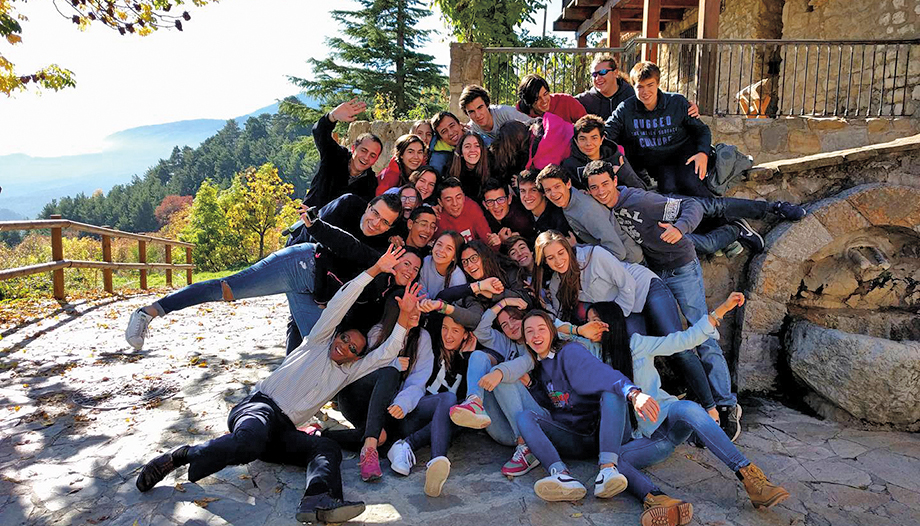
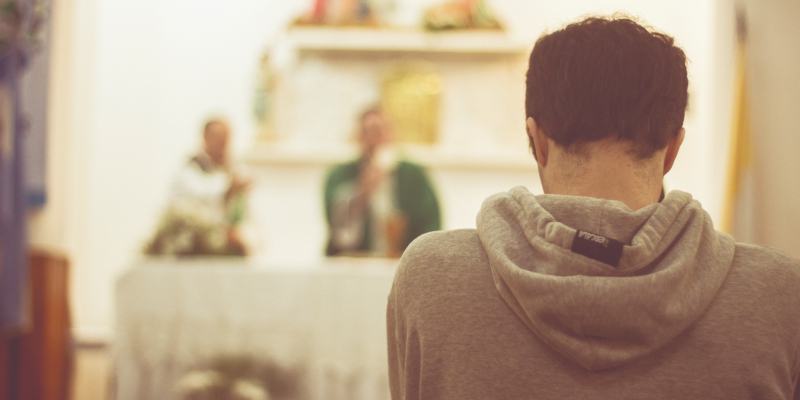

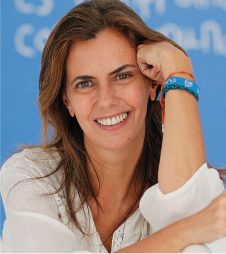
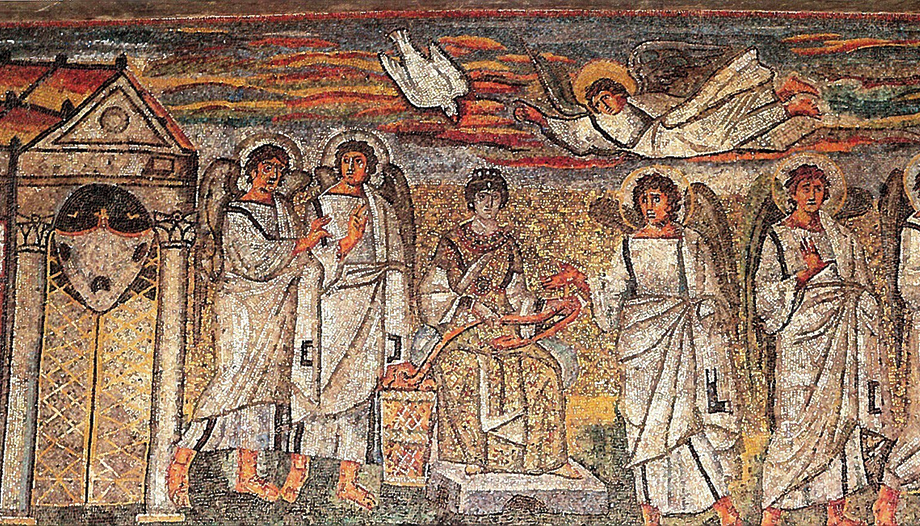

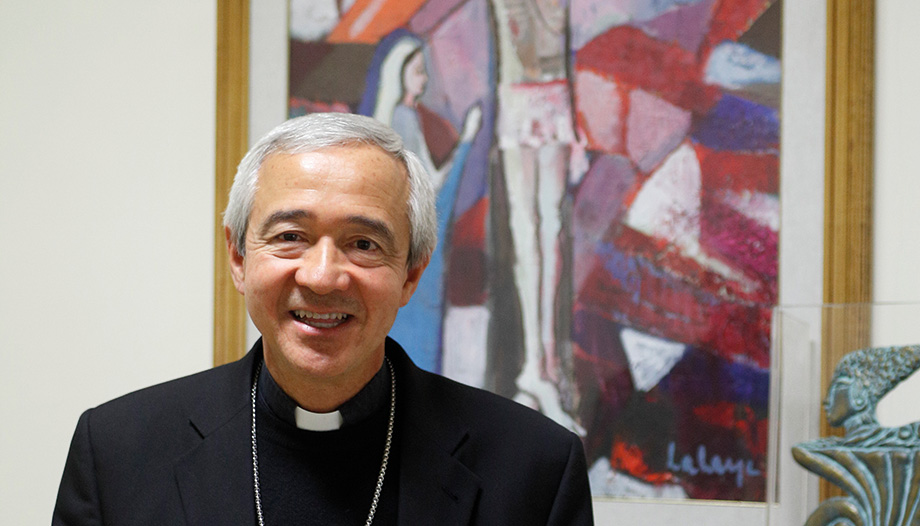

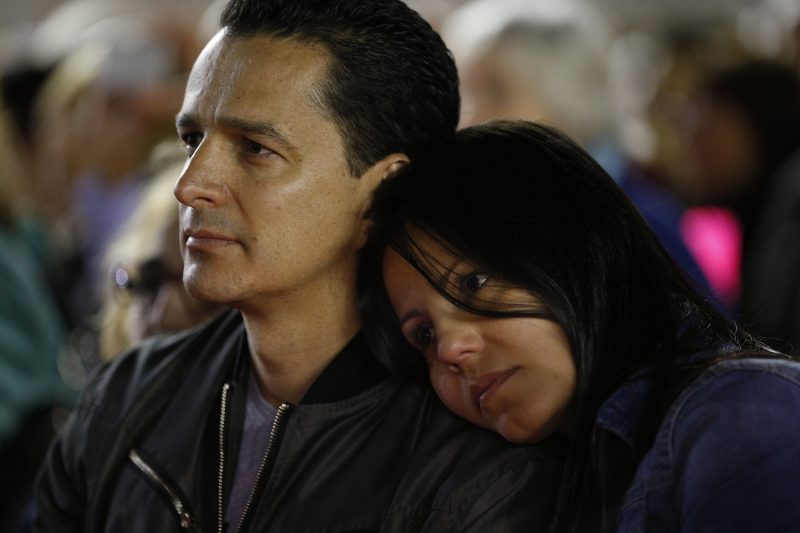

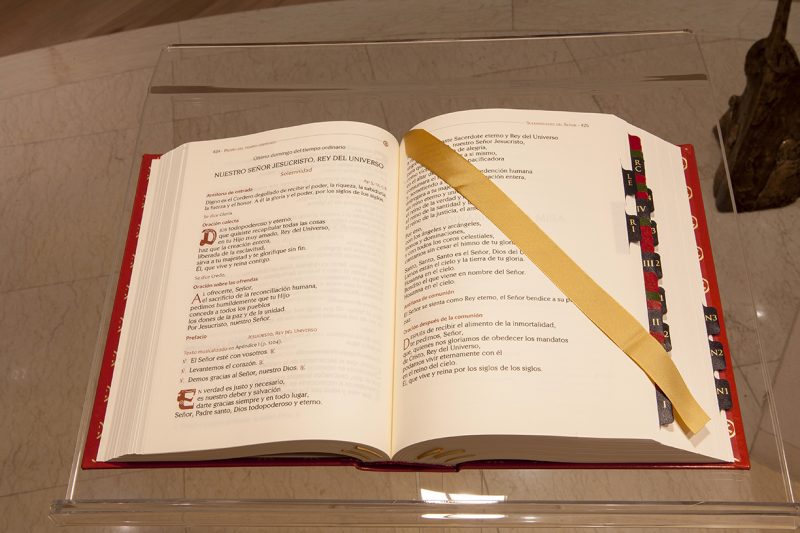

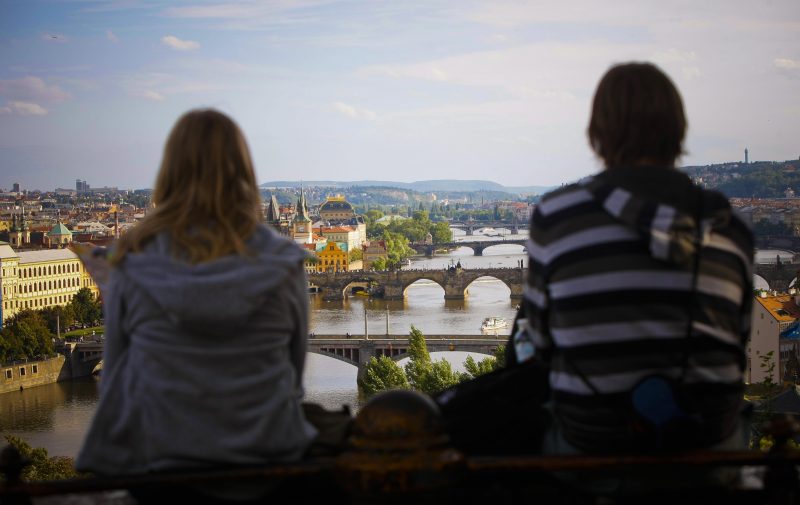

 Charism and hierarchy in Opus Dei, two dimensions in the same reality. The Relationship between the Gifts of the Holy Spirit in the Church
Charism and hierarchy in Opus Dei, two dimensions in the same reality. The Relationship between the Gifts of the Holy Spirit in the Church